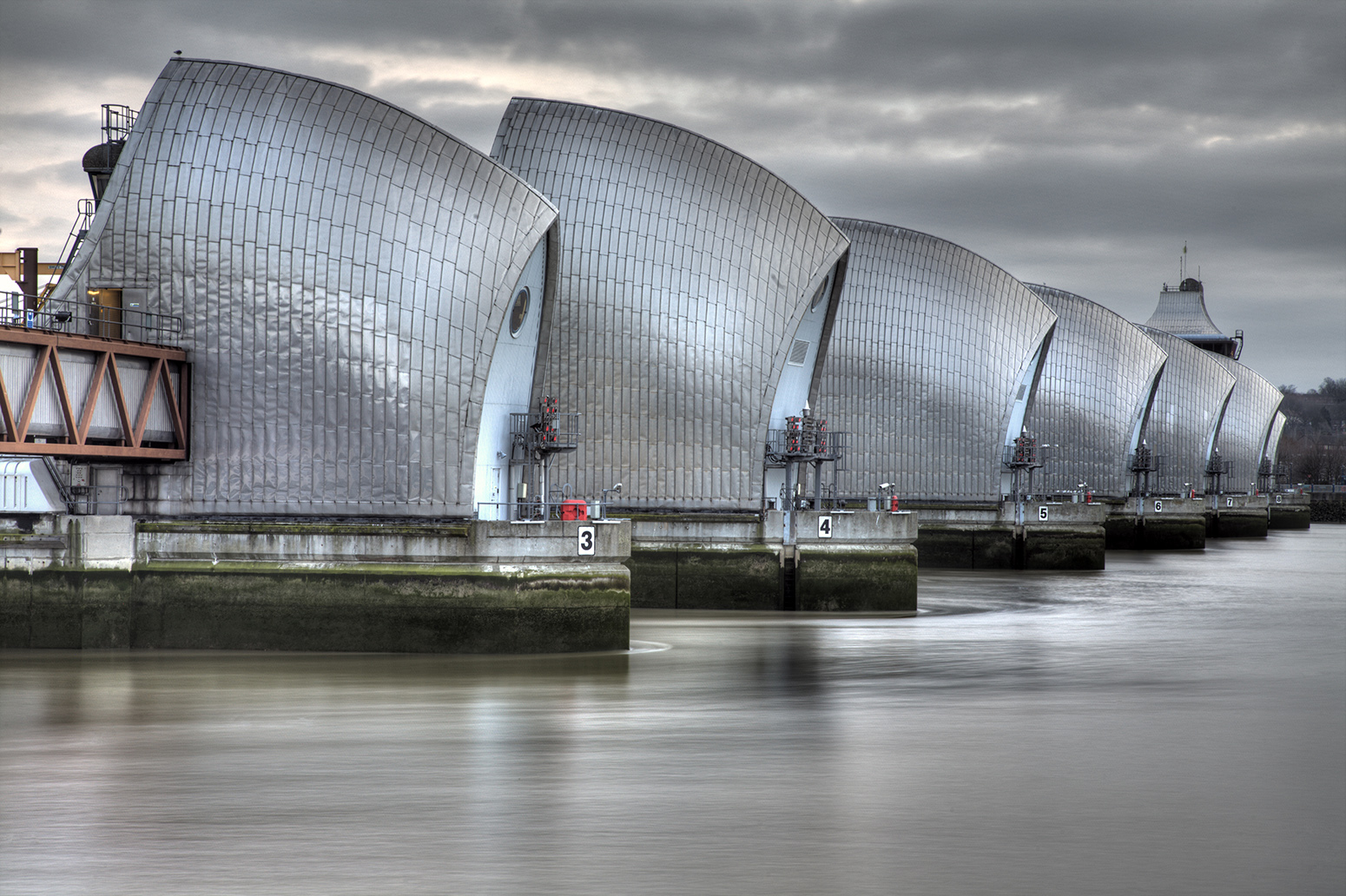

A recent example saw a boat approaching the barrier faster than the 12 knots maximum. Around four vessels per month fail to identify themselves, triggering various levels of response. The gap between piers is 61 metres, precisely and deliberately the same as the width through Tower Bridge.Įvery vessel that passes through the barrier is required to seek permission via radio. Can ships just pass through? A tug pulls a barge of soil, probably from a Crossrail site, through the Barrier.
THAMES BARRIER FULL
At full closure, the river can be up to four metres higher on one side of the Barrier. The closure process itself takes about 90 minutes, and is done in stages to minimise 'reflective waves' caused by the sudden imposition of 3,300 tonnes of metal blocking the river flow. Port of London Authority (PLA) boats must be put in place either side of the Barrier to alert and instruct approaching vessels. The operation begins typically 12 hours before closure. Sealing the Barrier is not as easy as simply pressing a button. The EA has the keys to the Barrier itself, planning ahead for maintenance and closures. You can see its green flag fluttering from the silver metal roof, which recapitulates the form of the hooded barrier. The Environment Agency (EA) is based in a peculiar concrete building immediately south of the river. Two operation centres oversee the Barrier from the Charlton shore. Who looks after it? The Environment Agency's distinctive control tower, which oversees closure of the Barrier. Last winter was one of the wettest on record, which mostly accounts for the increase in closures. The Barrier holds the water in the wider reaches of the Thames until tidal conditions are right for its release. If all this draining water were to meet an incoming tide, it could back up, damaging properties in west London. Instead, most were to manage water entering the Thames upriver, from rain runoff. The vast majority of these closures were nothing to do with tidal flood waters from the North Sea. Last winter, the steel wall was deployed on 50 occasions - more times than the previous 10 years put together. The Barrier has flexed its muscles with more regularity of late. From here, all shipping movements are monitored. Why has it closed so many times lately? The Port of London Authority's control centre overlooks the barrier. With the Barrier in place, only a "once-in-1,000-years" mega-tide could inundate the capital. Such an event today would cause billions of pounds worth of damage in central London, and knock out the Tube for weeks. The Thames flood of 1928 killed 14 and made thousands homeless. The barriers are actually hollow, and maintenance teams can climb inside. Their resting position is above-water, unlike the main barriers, which lie on the river bed when not in use. This is one of the smaller non-navigable barriers, to be found at either end of the structure. The Barrier's huge steel walls weigh 3,700 tonnes.

When a 3,000-tonne dredger hit the Barrier in 1997, the ship sank. It is designed to be bomb-proof and failure-proof. Should the National Grid go down, the Barrier has three backup generators that could operate for up to a month. The Barrier's function is so important to the capital that all systems have backups - including the service tunnel, which runs in duplicate. All are built to last, with thick concrete hulls accessed by the heaviest steel doors we've ever opened. Could the barrier fail?Ībove water, the Barrier comprises nine metal-hooded piers and two 'abutments' (additional piers without the sleek superstructure).

Not many structures from the 1980s can be said to ooze character, but a walk beneath the Thames Barrier is truly atmospheric. Colour-coded pipes and conduits lace around bulkheads. A ship passes overhead, and the hum of its engines propagates down to this riverbed subway. Voices echo from unseen parts of the structure.


 0 kommentar(er)
0 kommentar(er)
